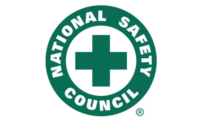What can be said about distracted driving that hasn’t already been said?
Almost every driver in the U.S. is already aware of the problem, according to a recent survey by the AAA Foundation. And most fear that distracted driving is getting worse. Drivers who report using a cellphone behind the wheel has jumped 46 percent since 2013, according to the AAA Foundation. Almost half (49 percent) of all drivers report recently talking on a hand-held phone while driving, and nearly 35 percent have sent a text or email.
One reason for growing fears: social media use is only increasing among teens, one of the most vulnerable at-risk populations for crashing while distracted.
Another factor: more and more vehicles are coming on the market with semi-autonomous driving functions, alerts and dashboard messaging, such as instructing drivers to brake or stop swerving. And watching rear-view video displays as your back out of driveways and parking spaces can lessen awareness of vehicles coming at you from the side, especially if you’re parked next to large vans or SUVs.
One more factor: Drivers are increasingly relying on GPS and traffic mapping mobile apps to find destinations and avoid traffic tie-ups and gridlock.
Well-known outcomes
So you probably already know the stats:
- About 25 percent of motor vehicle accident fatalities are a result of distracted driving
- In 2015, 3,477 people were killed in crashes involving a distracted driver
- In 2015, 391,000 people were injured in motor vehicle crashes involving a distracted driver
- Each day in the U.S., about nine people are killed and more than 1,000 injured in crashes reportedly involving a distracted driver
You might know this fact: sending or reading a text message takes your eyes off the road for about five seconds, long enough to cover a football field while driving 55 mph.
Here’s the irony: awareness and fear is not changing driving behaviors. According to the AAA Foundation survey, 88 percent of drivers believe distracted driving is on the rise, topping other risky behaviors such as aggressive driving, driving while using drugs, and drunken driving. The number of drivers who know using a cellphone behind the wheel is dangerous is at an all-time high of 58 percent.
But here is the kicker: 49 percent of drivers admit to using cellphones while driving. Drivers under age 20 have the highest proportion of distraction-related fatal crashes. Still, in 2015, 42 percent of high school students who drove in the past 30 days reported sending a text or email while driving.
The Superman complex
Traffic safety experts bemoan this, “Do as I say, not as I do” attitude toward distracted driving. Why is it so common? The same reason employees take risks at work—the “it won’t happen to me” belief. The fact is, most drivers for years have eaten food or drank coffee or water while driving, chatted up passengers, turned to face backseat passengers, fiddled with the dials of the dashboard audio system, or gawked at a roadside accident without crashing. And if such behavior does result in only a minor fender-bender, many drivers will shrug it off after a few days.
Psychologists call this habituation. You get complacent about the risks of driving. Do something every day, multiple times a day, for years, like driving, and human nature sends us into auto-pilot mode. By far, the number one cause of distracted driving fatalities (62 percent of all causes, according to one study) is being “lost in thought.” Just about everyone can relate to making a routine, everyday drive (to a store, to work, etc.) and forgetting all the details of how you got there. It’s scary when you stop to think about it, but complacency is difficult to crack – usually until you personally pay a steep price,
Breaking bad behaviors
What to do? Don’t give up on distracted driving training and campaigns. Have employees who have been involved in distracted driving crashes, or have been pulled over and fined by police for driving while holding a phone, tell their stories. Some employees might believe distracted driving crashes won’t happen to them, but being pulled over by police is out of their control.
And some companies adopt a zero-tolerance policy for cellphone use while driving. No cellphone use while behind the wheel can be a cardinal safety rule. One trucking firm CEO told ISHN: “I won’t abide by reckless behavior. For my company, holding a phone while driving is one strike and you’re out. You’ll get fired 99.9 percent of the time. We’ve let very good people go because they decided to talk on the phone while driving.



